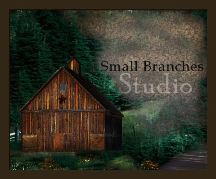I recently found out that I'm going to be the Poetry Editor for Touchstones which is the literary magazine here at Kansas State University. We only read work from graduate level writers, and we're taking the 2006 issue to AWP. (I'm keeping my fingers crossed that I'll be able to make it to Austin.)
The official submissions announcement will come out on the 1st of October, but the news is that we're taking electronic submissions for the first time. So, if you're in a graduate program and are interested in guidelines or if you're teaching and know of any eligible writers, *please* send me an email to small_branches (at) hotmail.com and I'll forward the complete guidelines to you as soon as I have them in my in-box.
Whew.
It's been busy around here, but mostly in a good way.
More books on the way
The 'net seems full of announcements about publications these days. Steve Mueske has a book forthcoming from Ghost Road Press: A Mnemonic for Desire. And recently I recieved a flyer from Word Press that David Cazden's Moving Picture has also been released. Congratulations, I believe, are in order.
Cheers!
Cheers!
The Powers of Poetry
The very interesting essay by Bly "What the Image Can Do" lists several "powers of poetry" or traits that make poetry work.
1. the image.
2. Frost's "Sentence Sound"
3. psychic weight
4. sound
5. drumbeat ( or Hall's "goatfoot")
6. the narrative
I am always interested in lists like these as while they seem to capture important elements of poetry writing, they rarely seem complete to me. There are other aspects that seem important that are not on the list. What about the visual / page placement / line breaks /stanza breaks?
Since I spent many years as a musician, I know that the rests are as important as the notes and they need to be heeded for the music to conform to what was composed. I feel that the same goes for poetry. To me the written page works as a score for the aural / oral experience of the poem. What else should be added to the list?
Read some Bly on-line.
1. the image.
2. Frost's "Sentence Sound"
3. psychic weight
4. sound
5. drumbeat ( or Hall's "goatfoot")
6. the narrative
I am always interested in lists like these as while they seem to capture important elements of poetry writing, they rarely seem complete to me. There are other aspects that seem important that are not on the list. What about the visual / page placement / line breaks /stanza breaks?
Since I spent many years as a musician, I know that the rests are as important as the notes and they need to be heeded for the music to conform to what was composed. I feel that the same goes for poetry. To me the written page works as a score for the aural / oral experience of the poem. What else should be added to the list?
Read some Bly on-line.
Subscribe to:
Comments (Atom)



